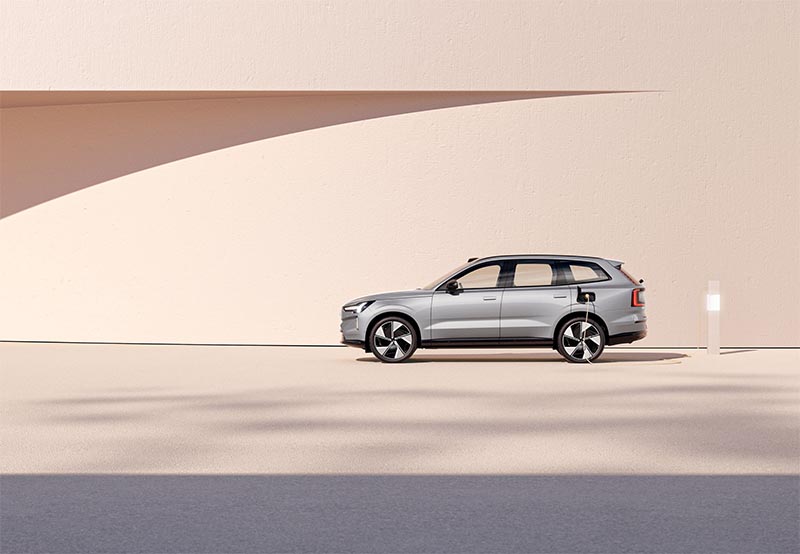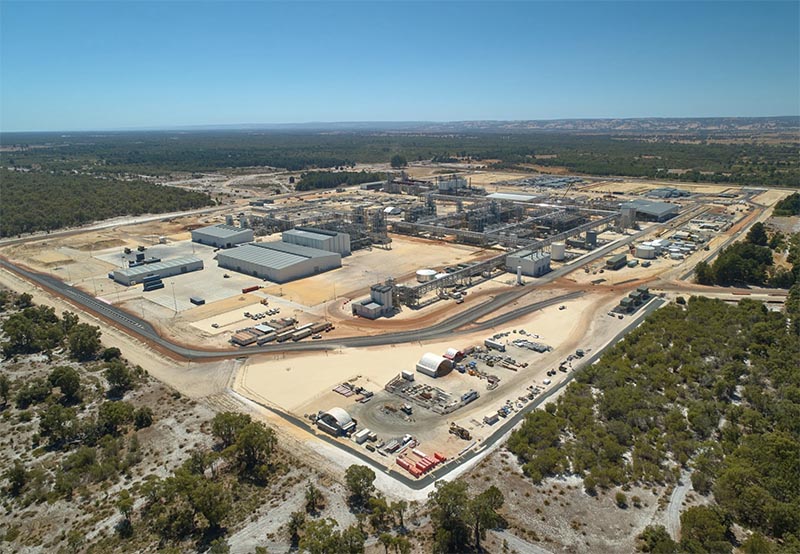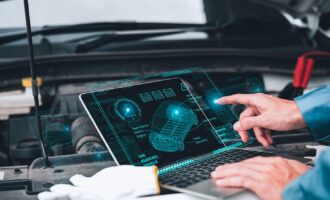
Securing the electric vehicle supply chain
Electric vehicles (EVs) have long been heralded as the key to unlocking our environmental aspirations. This modern form of transportation has experienced an unprecedented surge in popularity and adoption over the past few years. 14% of all new cars sold in 2022 were electric, up from less than 5% two years earlier, according to the International Energy Agency (IEA).
With popularity often comes pain. EV supply chains are under severe strain as automakers try to maintain pace with billowing demand. Manufacturers have been given a stark reminder of the intricate global supply network’s vulnerability and the urgent need for investments in sustainable transportation.
Uncertainties in battery production have the potential to impede the rapid expansion of the EV market. And it’s not just the batteries themselves, but the stuff that goes into them that is cause for concern. Minerals such as lithium, nickel, cobalt, manganese and graphite are essential for battery production, and rare earth elements are critical for electric motors. Prices of raw materials have reached record highs due to global shortages and geopolitical challenges. In a recently published report, BMI, a Fitch Solutions research unit, predicted a lithium supply deficit by 2025. The key problem is it takes years to develop a lithium mine.
Governments and automakers are concerned about Chinese dominance. China not only leads EV and battery manufacturing, but it has also cornered the market on the minerals, metals, cathodes and anodes that are essential for battery production. Cullen Hendrix of the Peterson Institute for International Economics, claims that China refined two-thirds of lithium, 60% of nickel, 70% of cobalt and graphite, and 95% of manganese in 2022. China was much faster at identifying the shift to EV batteries and got a big head start in partnering with other countries to secure mineral supply.
The United States and Europe are seeking to regionalise their supply chain for greater security, sustainability and lower costs. The European Union’s (EU) Critical Raw Materials Act, which was unveiled by the EU on March 16, 2023, states that no more than 65% of any key raw material should come from a single third country. Europe is almost entirely dependent on imports of these raw materials.
Start your engines, the race for supply chain security is getting underway.
We are witnessing a departure from the long-standing practice where car manufacturers oversee their primary suppliers, who, in turn, collaborate with tier-two suppliers, and so on. In the past, automakers have let battery suppliers buy lithium and other raw materials with a promise to buy a certain amount within a specified price range.
Lithium shortages have forced the hand of automakers. There is a rising trend of vertical integration of EV and battery production, to reduce bottlenecks and price fluctuations. Just a few weeks ago, Volvo Group acquired Proterra Powered business for USD210 million, whose assets include a development centre for battery packs in California and an assembly factory in South Carolina. The transaction is expected to close in early 2024, although it is subject to approval by the U.S. bankruptcy court. Proterra Inc. and Proterra Operating Company Inc. are in a voluntary Chapter 11 bankruptcy process in the U.S.
Sham Kunjur, who oversees General Motors’ (GM) procurement of battery materials, recently stated that there was not an established value chain that would support GM’s ambitions for the next 10 years.
Vertical integration of automotive manufacturing is not a new concept. Henry Ford, founder of Ford Motor Company, was also a pioneer of the supply chain. Due to concerns about shortages created by World War I, Ford purchased iron and steel operations to supply its sprawling River Rouge automobile plant in Dearborn, Michigan, U.S.A. The company even operated a rubber plantation in Brazil to secure materials for tyres.
With a global shortage of critical raw materials anticipated in 2030, OEMs are flexing their financial muscle. Automakers have been busy obtaining direct off-take agreements with existing metals producers. Now, they have turned their attention to direct investments in mining operations to secure offtake. It has been reported that an increasing number of auto executives are hitting the mining conference circuit in the hope of networking opportunities with mining executives.
Is the future of the EV industry a vertical mine-to-wheel collaboration? Exclusive access, cheaper supplies and the ability to monitor ethical and emissions standards are all key benefits of a greater upstream focus. Some analysts have suggested automobile companies have little choice—so intense is the competition for battery materials and so entrenched is China’s dominance. Not to mention the fact that the battery can account for around one-third of the cost of a large battery electric vehicle, according to Market Research firm Statista. Traditional automakers have lost market share in places where EV sales have grown the fastest.
Editor’s note: Automakers are also starting to turn their attention further downstream to the EV charging business—traditionally the forte of oil companies. In October 2023, Daimler Truck Financial Services and Ohio-based electric vehicle charging infrastructure firm, Electrada, unveiled an all-encompassing Charging-as-a-Service (CaaS) solution, which aims to accelerate the adoption of electric trucks and buses in North America.

In November 2023, Volvo Cars, which is owned by Chinese automaker Geely Group, launched Volvo Cars Energy Solutions, a completely new business unit that will offer energy storage and charging-related technologies and services. Together with Göteborg Energi Nät AB, the local grid company in Volvo Cars’ headquarters in Gothenburg, Sweden, Volvo is launching one of the first vehicle-to-grid (V2G) pilot programmes that aims to test such V2G technologies on the local energy grid. The pilot program deliberately uses a low-cost AC wallbox, to accelerate the widespread adoption of the technology.
Mineral supply is concentrated in just a few countries. In countries such as Bolivia, Chile and Argentina, the natural resources have been nationalised and access by foreign investors is restricted. Automakers are scrambling to obtain access to smaller mines, many of which have not begun producing.
In January 2022, GM pledged USD650 million to Lithium Americas Corp. to help fund the development of the Thacker Pass mine in the U.S. state of Nevada. The agreement provides GM with exclusive rights to 40,000 tonnes per year of lithium locally. Thacker Pass is the largest known source of lithium in the United States, and GM plans to utilise lithium carbonate in its proprietary Ultium battery cells. The agreement secures enough lithium for one million electric vehicles a year in 2025. GM reportedly beat out 50 bidders for the deal.
In November 2022, GM announced the long-term supply of battery-grade nickel sulfate from Vale Canada Limited, a U.S. free-trade partner, at its proposed plant at Bécancour, Québec, Canada. GM also recently inked a strategic agreement with Puerto Rico-based Energy Exploration Technologies (EnergyX) to develop lithium extraction and refinery technology that can make lithium metal directly from brine.
Hyundai Motor Group entered a partnership with non-ferrous metal smelting firm Korea Zinc on August 30, 2023, to enhance its nickel value chain. HMG Global, a joint venture by Hyundai Motor, Kia, and Hyundai Mobis, will invest USD398 million to acquire a 5% stake in Korea Zinc. The deal obtains 50% of Hyundai’s nickel requirements to produce EV batteries by 2031 and will ensure compliance with the EU Critical Raw Material Act and the U.S. Inflation Reduction Act requirements. Nickel supply is slated to begin in 2026.

So far, Ford has mainly opted for more traditional supply agreements. On May 22, 2023, Albermarle Corporation announced a “definitive agreement” with Ford Motor Company to deliver more than 100,000 metric tons of battery-grade lithium hydroxide as part of a five-year supply agreement, commencing in 2026. The deal will provide enough lithium supply for three million EV batteries for Ford.
Earlier, in July 2022, Ford and Rio Tinto signed a multi-material partnership that includes lithium, low-carbon aluminium and copper. Ford will also become the foundation customer for Rio Tinto’s Rincon lithium project in Argentina.
In May, Tesla broke ground on a Texas lithium refinery that will see the automaker move into the complex area of lithium refining and processing. Telsa will be the first major automaker in North America to refine its own lithium, a move Musk claims is necessary to achieve its EV sales targets. Despite refining its own lithium, Telsa will also continue to purchase from suppliers including Albemarle Corp and Livent Corp. Construction of the factory is expected to be completed in 2024.
To date, most OEM deals have prioritised lithium. Often forgotten, copper plays a critical role as a current collector. The IEA has signposted a potential shortfall of copper by 2030 in its net zero pathway.
Earlier this year, French-Italian carmaker, Stellantis, announced it had taken a minority stake in an Argentinian copper mine, to solidify its EV supply chain. The automaker—which manufactures 16 car brands including Alfa Romeo, Peugeot, Chrysler, Jeep and Fiat, has secured a 14.2% stake in McEwen Copper, a subsidiary of Canada’s McEwen Mining, for USD155 million. The deal includes an option to purchase copper at a ratio equivalent to its equity ownership. Stellantis previously entered into an equity investment and lithium hydroxide supply agreement with Vulcan Energy in June 2022.
Upstream is a risky business. It may turn out to be a masterstroke, however, moves by leading automakers appear to be part strategy, part desperation. It is worth noting that numerous lithium mines are under development and there could be an abundance of supply in the future. There is a risk that OEMs end up paying a lot more than they needed to when new capacity comes on stream.
On November 13, 2023, ExxonMobil unveiled its aspirations to become a leading supplier of lithium. The energy giant recently acquired 120,000 acres of the Smackover formation in southern Arkansas, known for its substantial lithium resources. The company will employ direct lithium extraction (DLE) technology to separate lithium from saltwater, with initial lithium production slated for 2027. The facility will supply the manufacturing requirements for more than a million electric vehicles annually.
It is also worth noting that Henry Ford’s vertical integration model is not viewed as a resounding success, with poor yields and bad relations with local workforces often cited. In a recent interview with Bloomberg Radio, Goldman Sachs Group Inc.’s head of commodities, Jeff Currie, emphasised that history is littered with examples of consumers trying to move upstream in commodities markets. “It always ends in tears,” he says. Currie suggested car companies are better sticking to their core competencies—and using hedging to minimise exposure to commodity price swings.
Whatever the future, a battery supply chain that excludes China looks impossible.







